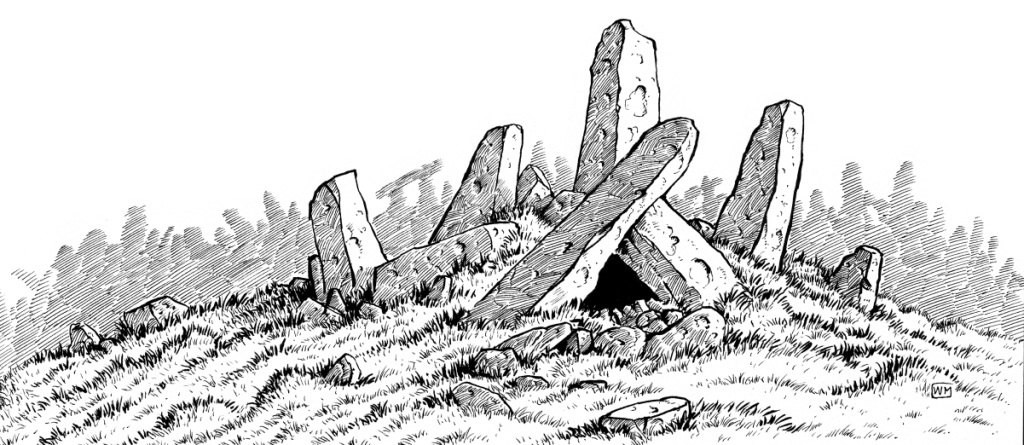PCs are an inquisitive lot. Irritatingly the more successful ones don’t just charge into the nearest dungeon in search of loot and glory. They ask questions. Lots of questions.

A wise man once said that knowledge is power. One of the principles of successful adventuring is reconnaissance. Knowing what the party is going to face before they face it enables them to purchase the right equipment, memorise the proper spells and even hire appropriate henchfolk and hirelings. Clever and wise PCs start their reconnaissance before they even enter the dungeon!
A prepared GM should be able to answer these important questions about the dungeon:
- Who built the dungeon?
- Why was the dungeon built?
- What major events have occurred in the dungeon?
- What is the dungeon called? Why?
- Why would the party want to explore the dungeon?
- What legends and rumours are associated with the dungeon?
- Does the dungeon have more than one entrance?
- Does the dungeon have any particularly well known features or locations?
- What secret(s) does the dungeon conceal?
- What general perils lurk in the dungeon?
Having this kind of information at his fingertips enables a GM to provide the appropriate information at the appropriate time. (Instead of revealing too much or making hasty choices that lead to confusion later on). Of course, not all the information the PCs gather will be true and accurate. Sources can be deliberately wrong or merely mislead. Others can provide correct information, but from their own perspective. For example, a lowly man-at-arms who sees a wizard cast a fireball might describe that worthy personage as an archmage!
Sources of Information
But from where will the clever PCs gain this information?
- Sages and other scholarly folk.
- Adventurers who have already been in the dungeon.
- Escaped slaves and prisoners.
- Ancient and not so ancient documents (journals, diaries, maps and so on).
- Current rumours.
- Legends.
- Talkative (or easily bribed) dungeon denizens.
- Skills.
- Spells.
Final Thoughts
So those are the general kind of questions PCs will (or more accurately should) ask about a dungeon before they delve into its depths. Having the answers ready (assuming they manage to find them) rewards clever play. It also ensures the GM does not accidentally reveal some important secret he wanted to keep secret until later.
Help Fellow Gamers
Do you have any other dungeon design tips related to this topic? If you do, please leave them in the comments below and help your fellow GMs design better dungeons today!
This article is part of Dungeon Design Fortnight. Dungeon Design Fortnight celebrates Raging Swan Press’s upcoming release of GM’s Miscellany Dungeon Dressing – a huge 336-page tome dedicated to all aspects of dungeon design and dressing. This article, along with loads of other useful information, appears in the book. I’m insanely proud of GM’s Miscellany Dungeon Dressing and I hope if you are thinking about designing dungeons you check it out.
I wrote about this topic from a story planning perspective.
http://runagame.blogspot.com/2014/03/dungeons.html?m=1
Thanks for sharing that link. I enjoyed the different perspective very much. If you’ve got more to share, please do so!